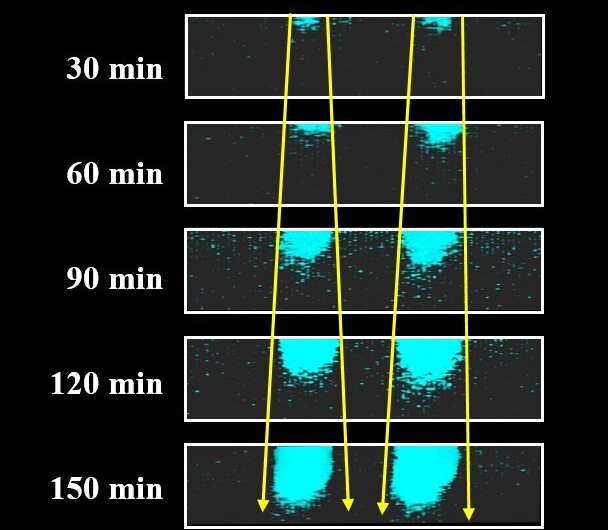Fluorescent technique brings aging polymers to light

Modern society relies on polymers, such as polypropylene or polyethylene plastic, for a wide range of applications, from food containers to automobile parts to medical devices. However, like people, polymers age, and when they do, the materials become prone to cracking or breaking. Now, researchers reporting in ACS Central Science have developed a method to visualize variations in polymers that arise with age.
Heat, sunlight, oxygen and humidity can all cause polymers to degrade over time. At early stages, polymer chains break, producing functional groups, such as hydroxyl groups, and generating free radicals that speed up the aging process. Scientists have developed methods to study more advanced signs of polymer aging, but these techniques don't provide a microscopic 3-D picture, and most aren't sensitive enough to detect early aging. Rui Tian, Chao Lu and colleagues wanted to find a way to visualize the aging process of polypropylene and polyethylene polymers in 3-D. Such a technique could be used to detect aged polymers so they can be repaired or replaced with new parts before they fail.
The researchers based their method on a commercially available fluorescent dye, called DBPA, that can specifically attach to hydroxyl groups in polymers as the chains break. The team heated a thin sheet of polypropylene or polyethylene at 140 F and then soaked the plastic in a DPBA solution to dye the aged sites with hydroxyl groups. When the researchers observed the sheets under a confocal microscope, they found that the aged sites in the polymers—as revealed by the fluorescently tagged hydroxyl groups—grew deeper, wider and more frequent with time. The method detected faster polymer aging when the sheets were exposed to higher temperatures. To the researchers' knowledge, the fluorescent technique is the first that can sensitively monitor polymer aging in 3-D, which will assist in identifying deteriorating polymers at the earliest stages.
More information: "Three-Dimensional Visualization for Early-Stage Evolution of Polymer Aging" ACS Central Science (2020). pubs.acs.org/doi/abs/10.1021/acscentsci.0c00133
Journal information: ACS Central Science
Provided by American Chemical Society





















